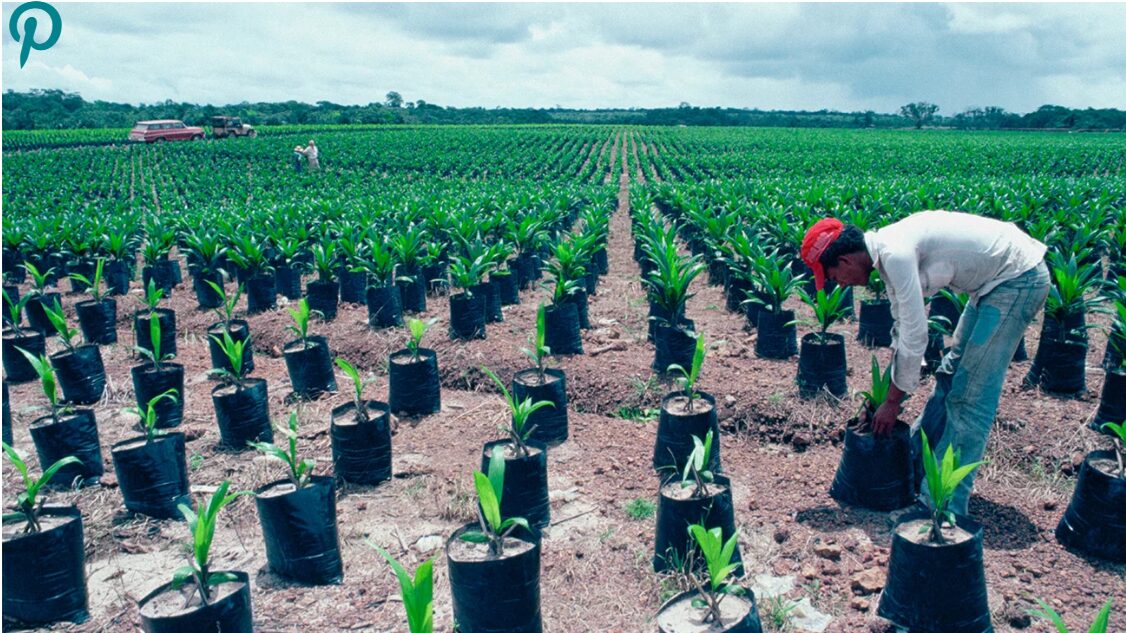Palm oil, a vegetable oil derived from the fruit of the African oil palm tree, has long been infiltrated into our daily lives. It is not only a common guest in the kitchen, but also an invisible ingredient in food, cosmetics, cleaning products and even biofuels. Its huge output and low cost make it one of the most popular vegetable oils in the world. However, behind this convenience, there is a profound threat to the earth’s ecology, especially the destruction of tropical rainforests.
This article will analyze the impact of the palm oil industry on the environment, explore its relationship with deforestation, reveal the ecological and social problems behind it, and look forward to possible paths for sustainable development.
1. Popularity and industrial background of palm oil
Palm oil is widely used in consumer products around the world due to its stable physical properties, mild taste and cost-effectiveness. Since the Industrial Revolution, especially since the 1970s, the use of palm oil has surged, becoming the world’s most important vegetable oil, accounting for more than half of the market share.
The main producers are concentrated in Southeast Asia, especially Indonesia and Malaysia, which contribute about 85% of the world’s palm oil production. However, the expansion of palm oil often comes at the expense of natural forests, bringing serious ecological problems.
2. Environmental costs: the costs of forests, species and climate
1. One of the main causes of deforestation
The expansion of palm oil plantations is one of the main drivers of tropical forest loss in Southeast Asia. According to the Food and Agriculture Organization of the United Nations and multiple studies, the palm oil industry has led to a large amount of forest clearing, especially in Indonesia and Malaysia, accounting for about half of local deforestation.
This means not only the disappearance of trees, but also the destruction of complex ecosystems. The clearing of forests releases a large amount of carbon stored in trees and soil, becoming an important source of global greenhouse gas emissions.
2. Threats to biodiversity
The disappearance of forests directly threatens the survival of many endangered species. The habitats of iconic animals such as orangutans, Sumatran tigers, elephants and rhinos have been eroded, and ecological connectivity has been destroyed, resulting in a sharp decline in populations and even the risk of extinction.
The ecological value of a single palm oil plantation is far lower than that of a primary forest, and it cannot provide enough food and shelter for wildlife.
3. Water pollution and land degradation
Large-scale palm oil cultivation is accompanied by the use of pesticides and fertilizers, which leads to soil and water pollution. Palm oil mill effluent (POME) contains high concentrations of organic matter. If discharged without treatment, it will seriously deplete oxygen and damage aquatic ecosystems.
In addition, deforestation reduces the natural water regulation function and increases the risk of floods and soil erosion.
4. Forest fires and air pollution
In order to open up plantations, some areas use forest burning, resulting in large-scale forest fires. The amount of greenhouse gases released by the fire in Indonesia in 2015 once made it the world’s largest emitter. Haze not only harms regional air quality, but also poses a threat to public health.
III. Industry supervision and sustainable development challenges
1. Supervision status and dilemma
Palm oil industry supervision is weak, and profit-driven and environmental protection demands conflict. Although some countries and companies have committed to sustainable development and promoted certification systems (such as RSPO, MSPO, ISPO, etc.), their lack of execution and huge industry influence have made it difficult to fulfill their promises.
2. Green commitment and reality gap
Some international cooperation, such as the 2015 Amsterdam Declaration, seeks to eliminate unsustainable palm oil, but the effect is limited due to the lack of enforcement and industry pressure. Indonesia’s “Palm Oil Commitment” plan was ultimately aborted due to industry resistance.
IV. Action paths for individuals and society
1. Identification and selection
Palm oil is often hidden in product ingredient lists under various names, such as “palmitate”, “palmitoyl”, “stearic acid”, etc. Consumers can support environmentally friendly production by choosing products with sustainable certification.
2. Advocacy and supervision
The public can promote industry transparency and sustainable transformation by signing petitions, participating in protests and putting pressure on companies. The government can formulate strict land use policies, prohibit deforestation, and support ecological protection.
3. Weighing alternatives
Although the environmental cost of palm oil is high, its high yield means that alternative oil crops may consume more resources and bring greater environmental pressure. Therefore, promoting sustainable production of palm oil is more realistic than simple substitution.
The palm oil industry is like a double-edged sword: it contributes greatly to the global economy and food supply, but it also brings ecological disasters and social problems. The way forward is to balance development and protection, and achieve sustainable production of palm oil through scientific management, policy support and public participation.
Every consumer’s choice is a vote for the future of the earth. Identifying products, supporting green certification, and advocating transparency and responsibility are the source of our strength to jointly protect forests and biodiversity.


